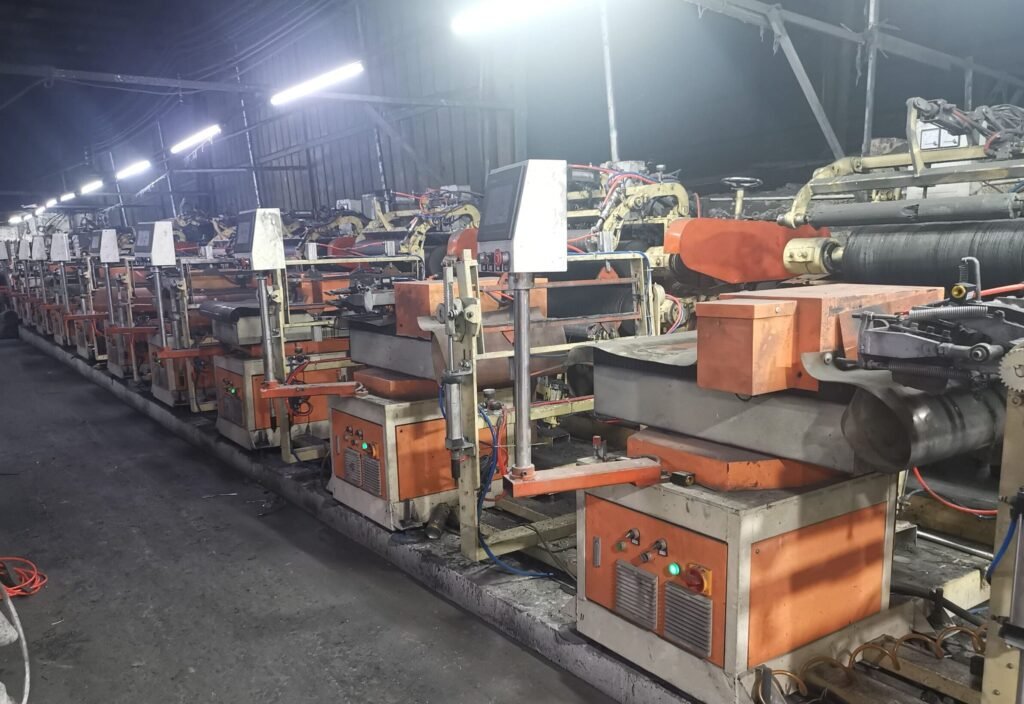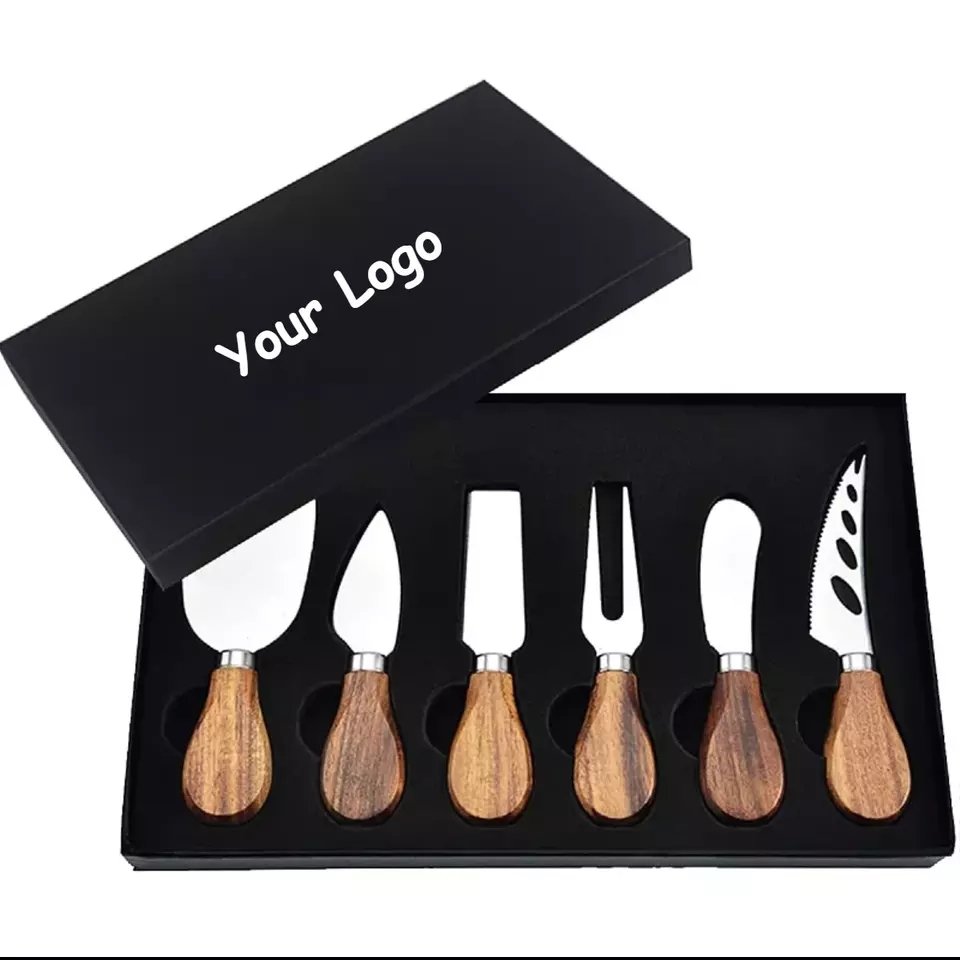Chinese cutlery may be affordable, but is it really worth your trust? Here’s why smart buyers still pick China, even when others hesitate.
Chinese stainless steel cutlery continues to lead in global value due to its unmatched combination of quality, customization, and cost-efficiency.
When I first started exporting stainless steel cutlery over a decade ago, I heard all kinds of doubts about “Made in China.” But today, even premium brands from Europe come to us for OEM production. That shift didn’t happen overnight—it’s the result of consistent delivery, competitive pricing, and quality that speaks for itself.
Table of Contents
What makes Chinese stainless steel cutlery cost-effective?
Even when prices rise globally, Chinese factories remain competitive. Why is that?
China’s mature supply chain, mass production capabilities, and skilled labor pool allow for top-tier quality at unbeatable prices.
Comparing Global Manufacturing Costs
| Country | Labor Cost per Hour | Steel Sourcing Cost | Avg. Production Cost per 10K Units |
|---|---|---|---|
| China | $4.50 | Low (domestic) | $6,000 |
| Germany | $35.00 | High (imported) | $20,000 |
| USA | $30.00 | Medium (mixed) | $18,000 |
| India | $2.00 | Medium | $7,500 |
Chinese factories can balance automation and manpower, giving flexibility that most Western suppliers can’t match. While Germany and the U.S. focus on automation, China retains an edge through blended efficiency—leveraging human expertise where machines can’t perform as finely.

Material Utilization and Waste Control
China’s ability to purchase stainless steel in massive quantities, paired with sophisticated material management, means we reduce waste. For example, in my factory, we reuse more than 30% of leftover steel from each production cycle.
The OEM/ODM Leverage
When you source from China, you don’t just buy a product. You buy the flexibility to control design, material grade, packaging, and even delivery pace. Most other countries can’t offer this without significantly increasing your cost.
Is there a quality trade-off with cheaper prices?
If it’s cheaper, does it mean lower quality?
Not necessarily—China offers different grades and lets you choose the right quality level for your target market.
Understanding Grade Options in China
| Grade | Chromium % | Nickel % | Corrosion Resistance | Common Use Cases |
|---|---|---|---|---|
| 18/10 | 18% | 10% | Excellent | Luxury hotels, premium sets |
| 18/8 | 18% | 8% | Very Good | Family-use, export markets |
| 18/0 | 18% | 0% | Moderate | Budget markets, allergy-safe |
I always ask my clients: “What is your customer most sensitive about—appearance, price, or durability?” In China, we can fine-tune that balance. One Turkish brand we worked with chose 18/0 to avoid nickel, but upgraded to better polishing techniques to keep a premium feel.
QC Processes: Beyond the Stereotype
Chinese suppliers today follow international standards—LFGB, FDA, BSCI. In our own factory, we have a three-level inspection process. First during molding, then post-polish, and final pre-pack. Each stage tracks defects with real-time dashboards.
The Customization Trap
Some buyers assume all suppliers offer the same quality. That’s a mistake. Not all factories are equal. I recommend every buyer ask for batch samples and not just rely on catalog photos.
Why do global brands still choose Chinese manufacturers?
If they have money to spend, why do they come to China?
Because even high-end brands want efficiency, flexibility, and speed—and China delivers on all three.
The Speed Factor
| Region | Avg. Lead Time for 50K Units | Sample Turnaround |
|---|---|---|
| China | 25 days | 5–7 days |
| Europe | 45 days | 10–14 days |
| North America | 50+ days | 14–21 days |
In our case, for a UAE client, we retooled their custom mold design in less than 6 working days. They told us their previous supplier in Europe took over three weeks just to confirm feasibility.
In-house Tooling Capabilities
Many Chinese manufacturers, including us, have our own mold departments. This reduces cost and speeds up prototyping. Western factories often outsource tooling, adding both time and cost.
Intellectual Property (IP) Concerns
The IP landscape in China is improving. We now sign NDAs, and platforms like Alibaba require registered trademarks for brand protection. Our team always advises clients to register locally to avoid gray-market copycats.
Is Chinese stainless steel truly durable?
Isn’t it more fragile compared to European or Japanese products?
Chinese stainless steel can be just as durable—when you choose the right supplier and grade.
Real World Durability Tests
| Test Type | Standard (Pass Level) | China 18/10 Sample | EU 18/10 Sample |
|---|---|---|---|
| Salt Spray Test | 24 hours | 28 hours | 29 hours |
| Bending Pressure | 30 kg | 31.2 kg | 30.8 kg |
| Dishwasher Cycles | 1000+ cycles | 1020 cycles | 1005 cycles |
Durability is not just about the raw material. It’s about heat treatment, polishing method, and even how the handle is joined to the body. In one project, we redesigned the joint on a soup spoon and reduced customer complaints by 70% within a month.
The Misconception of “Cheap = Weak”
Buyers sometimes assume all Chinese goods are fragile. That’s just outdated thinking. It’s like assuming all Italian cars are unreliable—it used to be true, but not anymore. Quality today depends more on the factory than the flag.
Can Chinese suppliers handle large orders consistently?
What if I need monthly shipments for a supermarket chain?
Yes, with strong production systems and scalable capacity, Chinese manufacturers can handle continuous large-volume orders.
Capacity and Scalability
| Supplier Type | Max Daily Output | Avg. Monthly Orders Shipped | Number of Production Lines |
|---|---|---|---|
| Tier 1 OEM (like us) | 50,000 pcs | 20+ containers | 6–8 lines |
| Small Workshop | 5,000 pcs | 1–2 containers | 1–2 lines |
| Trading Company | Varies | Unstable | Outsourced |
We’ve worked with supermarket chains in Canada, the UK, and Chile—each requiring over 100,000 pieces a month. We plan 3 months ahead, sync production to shipping schedules, and even include buffer stock in case of sudden demand surges.

Avoiding Bottlenecks
Smart factories like ours use ERP and MES systems to reduce lead-time risks. When one polishing machine breaks, we have backups. When a packaging supplier delays, we have three alternatives pre-approved. That’s how we keep things moving even during holidays.
A Quick Case Study
Last year, one of our European clients suddenly doubled their order right before Christmas. Thanks to our automation line and raw material buffer, we delivered the new quantity 10 days earlier than their deadline—and they renewed their contract for 2 more years.
Why is steel from China cheap?
High-quality steel at low prices—what’s the catch?
China’s low steel prices come from local raw material sourcing, government-backed infrastructure, and highly optimized production systems.
Understanding Cost Drivers
| Factor | China’s Advantage |
|---|---|
| Raw Material Sourcing | Local mines and import contracts with iron-rich nations |
| Labor Cost | Significantly lower than Western countries |
| Government Subsidies | Support for steel and infrastructure sectors |
| Energy & Logistics | State-controlled power and rail networks |
| Industrial Ecosystem | Integrated supply chains reduce transport delays |
In my years of experience, I’ve visited several steel plants in China. One thing stood out—the way everything is interconnected. From smelting to rolling to shipping, it’s all within reach. That cuts costs drastically compared to countries where components must be sourced from different regions or even nations.
Economies of Scale in Action
Chinese steel mills operate at scales that dwarf those in many Western nations. When you’re producing millions of tons annually, your per-ton cost drops significantly. This is why even premium-grade stainless steel in China can be 30–40% cheaper than equivalents from other countries.
Where does China get their stainless steel?
How can China produce so much stainless steel?
China sources stainless steel both domestically and through strategic global imports of nickel, chromium, and iron ore.
Supply Chain Origins
| Material | Source Countries | Importance in Stainless Steel |
|---|---|---|
| Nickel | Indonesia, Philippines | Increases corrosion resistance |
| Chromium | South Africa, India | Adds hardness and polish |
| Iron Ore | Australia, Brazil | Steel base material |
China has long-term contracts with these nations. Combined with its own domestic mining operations, this provides a reliable and often cheaper source of raw materials. I once worked with a factory that switched suppliers for nickel from spot market purchases to long-term contracts—saving over 18% on material costs in one year.
Domestic Capacity Boost
In recent years, China has also invested heavily in processing plants within countries like Indonesia, building smelters on foreign soil. This ensures supply stability even during global shortages or trade restrictions.
What are the disadvantages of stainless steel cutlery?
Stainless steel is everywhere—but is it perfect?
While durable and stylish, stainless steel cutlery can have drawbacks including high manufacturing energy, allergenic nickel content, and occasional design limitations.
The Other Side of Shine
| Disadvantage | Explanation |
|---|---|
| Energy-Intensive Production | Smelting and polishing processes require high energy |
| Nickel Allergies | Some users react to 18/10 steel (contains nickel) |
| Design Limitations | Difficult to achieve ultra-fine or decorative forms |
| Higher Initial Cost vs. Plastic | Stainless steel is more expensive upfront |
Stainless steel cutlery is a long-term investment. But that doesn’t mean it’s ideal for all applications. I’ve seen clients struggle when trying to sell 18/10 cutlery in markets where buyers are price-sensitive or prone to nickel allergies.
Recycling Challenges
Despite its recyclable nature, stainless steel is not always collected or processed due to the high sorting costs. So while eco-friendly in theory, it needs a robust system behind it to make that real.
What is the outlook for stainless steel in China?
Where is this massive industry heading?
China’s stainless steel industry is shifting toward green production, high-end applications, and digitalized smart manufacturing.
Key Growth Drivers
| Trend | Impact |
|---|---|
| Carbon Neutral Policies | Push toward low-emission and electric arc furnaces |
| Infrastructure Investment | Demand for corrosion-resistant construction steel |
| Export Diversification | Expanding to Africa, South America, Middle East |
| Smart Factory Adoption | AI-driven quality control and predictive maintenance |
As a supplier, I’ve seen factories install solar panels and switch to electric arc furnaces. One of our polishing workshops cut its energy usage by 28% in just six months. These changes not only reduce environmental impact but also help us meet rising ESG demands from global clients.
Government Policies Fueling Innovation
The Chinese government is actively promoting stainless steel applications in green building, marine, and medical sectors. These create huge B2B opportunities for factories that can meet technical standards.
What is the outlook for China stainless steel in 2025?
Will China keep its edge in the near future?
By 2025, China is expected to lead the world in eco-friendly stainless steel production and maintain dominance through volume, innovation, and agility.
Forecasted Trends
| Metric | 2023 (Est.) | 2025 (Projection) |
|---|---|---|
| Annual Stainless Steel Output | 36 million tonnes | 42+ million tonnes |
| % from Green Production | 18% | 30%+ |
| Exports to Emerging Markets | 25% of total | 35% of total |
By 2025, a bigger portion of Chinese stainless steel will come from low-carbon production lines. More factories will use scrap steel as base material and integrate real-time quality monitoring with AI.
Evolving Role in the Global Market
While other countries cut capacity or face trade friction, China is expanding in smart ways. I predict more Chinese suppliers will bypass tariffs by setting up joint ventures abroad or exporting components for final assembly elsewhere.
For international buyers, this means more options, better compliance, and continued value.





